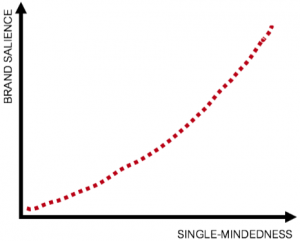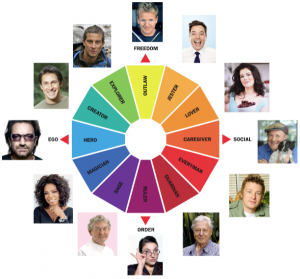Trump and brand archetypes: why likeability doesn’t matter
Share
If Donald Trump has shown anything, it’s that it’s important to understand the difference between archetypes and stereotypes, writes Susanna Kass.
 There’s something so attractive, so reassuring, about archetypes. So much so that no matter how much your rational mind knows the facts don’t stack up, your emotional mind is drawn to the satisfaction of signals that beautifully sync with expectations.
There’s something so attractive, so reassuring, about archetypes. So much so that no matter how much your rational mind knows the facts don’t stack up, your emotional mind is drawn to the satisfaction of signals that beautifully sync with expectations.
Most of us have been raised on both loved and loved-to-hate archetypes throughout popular culture: Atticus Finch, the stoic guardian; Chewbacca, the innocent and loyal sidekick; Cersei the unshakeable ice queen, to name but a few. Our common perception of these characteristics have helped us navigate our understanding of human nature, they’ve shaped how we define ourselves and those around us.
Great brands recognise the power in crafting personalities around these same frameworks or archetype blueprints. You could even say it’s the definition of branding at its core – the process of curating a set of signals delivered from a commercial enterprise in a way that builds a uniform and cohesive sense of ‘person’.
A person we understand, like or, preferably, love.
Brands have become so good at personality modelling, we (people) now have an expectation to apply these same techniques to brand ourselves. ‘Personal branding’ dictates we must ensure our traits, motivations, signals and values are packaged in a way that’s cohesive, clear and (sometimes) appealing.
You might be thinking at this stage that your own personal brand is complex. Not easily nor willingly compartmentalised into an archetypal template or described in with stereotypical cliché. And you’d be right.
But not famous. Your audience is likely to be engaged. They will have the time and headspace to appreciate your paradoxes and depth of character.
However, when you’re appealing to a mass audience who only have the one dimension of your curated image to build on, higher impact is directly correlated with how closely you align to an archetype.
To quote the original mad man: “The manufacturer who dedicates his advertising to building the most sharply defined personality for his brand will get the largest share of the market at the highest profit.” – David Ogilvy
The cult of personality branding can be appreciated in full colour through our obsession with reality TV celebrities. These ‘normal people’ armed with media strategies and the simplest code for mass interpretation are able to cut through the clutter and engineer celebrity status. Like junk food for the mind, we intellectually reject it but gravitate to its convenience and instant gratification.
Which brings us to Trump.
In a scenario where you need mass appeal (like, say an election) it helps if you can build on your already robust reality-TV-cultivated personal brand. Starting the bid for Republican Presidential nominee, Trump’s personal brand was estimated by the Huffington Post to be worth in the region of $4 million.
The beauty of archetype branding is that likeability doesn’t really matter. What matters is clarity. On the one hand we have Donald Trump. An arch villain, or outlaw, if you like. Racist, misogynist, hot tempered, spray tanned, has small hands, bigoted. He’s fumbled through a seemingly bottomless run of disgraceful statements and actions – but these have all reinforced his archetype. We may not like what he stands for but we understand it.
Through her flawed authenticity, Hillary has ironically delivered a more ambiguous personal image tainted by years of political baggage, gender biases and conflicting personality signals both warm and cool. Speaking in the simplest terms: we prefer someone transparently bad than someone we can’t quite work out.
So here we are, with the devil we know, set to do what devils do. And the questions we’re left with are probably many, but one I may offer help with is: how can my brand sharpen its personality based on archetype modelling?
First, create archetypes, not stereotypes.
If you want to remain agile and relevant while adhering to tightly consistent characteristics it’s helpful to understand the difference between bones and flesh. Archetypes are the foundations, the starting code, your backbone. Stereotypes are solutions. They are an oversimplified representation of a person or thing that plays into cliché and formula.
If, in the desire to create something easily decoded, you jump straight in to building a stereotype you’re essentially starting with the outer shell – which can be not only limiting but also quite boring.
When you start from the inside, you’ll find the outside can change quite dramatically while still staying true to the core. For example, the matriarch (caregiver) archetype can be associated with Florence Nightingale, as well as Princess Diana, and Angelina Jolie. Same same but different.
It’s fair to say, building a ‘person’ by committee can easily result in something of a Frankenstein’s Monster.
This is where the archetype framework can help to keep us focused and single minded.
While archetype names may vary, any given framework is made up of 12 sets of characteristics. These sets describe distinct life philosophies and drivers (including motivation, world view, greatest strength, weakness, hopes and fears) that make up the elements of your backbone.
Define brand values that are distinct and communicate a sense of what the brand stands for. Don’t fall back on the commonly presumed moral imperatives such as ‘respect’, ‘collaboration’ or ‘progress’; these are what makes us common. Ask yourself: what sets you apart?
Contrary to what many value sets suggest – there are no right or wrong values. It’s perfectly ok for someone to value individual achievement and freedom, which is different to valuing collective success and equality. Don’t be afraid to be different. Resist the urge to be everything to everyone.
Once your bones are in place, you can begin to flesh out your distinct expression of your guiding principles.
Foster personality traits that are directly born from your values. Ask yourself: if someone values ‘X’, how would the rest of us know this from their personality? You might expect someone who values progress to be naturally curious, or brave. Someone who values honesty to be candid or straight-talking.
Consistency is mandatory. Spray tan is optional.
_
Susanna Kass is a senior strategic planner at Affinity.
Image copyright: demerzel21 / 123RF Stock Photo

















